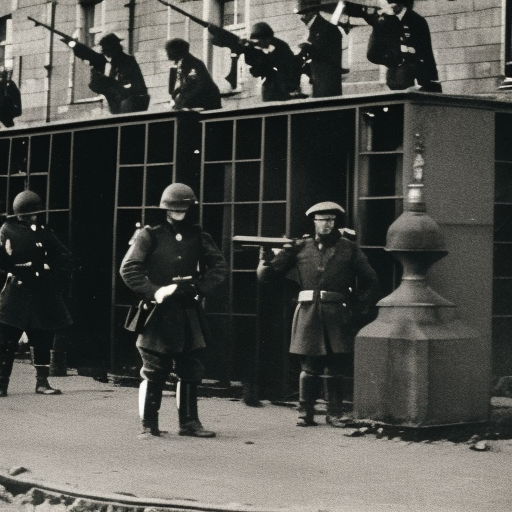The Irish Civil War
The Irish Civil War was a conflict that took place in Ireland from 1922 to 1923. It was fought between the forces of the newly established Irish Free State and those who opposed the Anglo-Irish Treaty that had led to the creation of the Free State. The war was a bitter and divisive conflict that resulted in the deaths of thousands of people and had a lasting impact on Irish politics.
Background
The Irish Civil War was the culmination of a long struggle for Irish independence from British rule. In 1916, a group of Irish nationalists staged the Easter Rising, a rebellion against British rule in Ireland. Although the rebellion was quickly crushed by British forces, it inspired a wave of support for Irish independence.
In 1919, the Irish Republican Army (IRA) was formed, and it began a guerrilla war against British forces in Ireland. The conflict, known as the Irish War of Independence, lasted until 1921 when a truce was agreed upon. Negotiations between the British government and Irish leaders resulted in the signing of the Anglo-Irish Treaty in December 1921.
The Treaty and Division
The Anglo-Irish Treaty established the Irish Free State as a self-governing dominion within the British Empire. While it granted Ireland a significant degree of independence, it fell short of the complete independence sought by many Irish nationalists. The treaty also included a provision that allowed Northern Ireland to opt-out of the Free State and remain part of the United Kingdom, a decision that further divided the Irish nationalist movement.
The signing of the treaty led to a split within the nationalist movement. Those who supported the treaty, led by Michael Collins, believed it was a step towards full independence and saw the establishment of the Free State as a significant achievement. However, those who opposed the treaty, led by Eamon de Valera, argued that it fell short of the goals of the 1916 rebellion and compromised Irish sovereignty.
Outbreak of War
The division over the treaty quickly escalated into violence. In June 1922, the IRA, which had been the main force fighting against British rule, split into two factions: the pro-treaty IRA and the anti-treaty IRA. The pro-treaty forces, now known as the National Army, were made up of those who supported the Free State, while the anti-treaty forces were composed of those who opposed it.
The conflict began with a series of attacks by the anti-treaty IRA on Free State forces. The National Army responded with a campaign to suppress the anti-treaty forces. The war quickly spread throughout the country, with both sides engaging in guerrilla warfare and reprisal attacks.
Course of the War
The Irish Civil War was marked by intense fighting and brutal tactics employed by both sides. The National Army, which had the support of the British government, had superior resources and firepower, including artillery and aircraft. The anti-treaty forces, on the other hand, relied on guerrilla tactics and hit-and-run attacks.
The war was characterized by a series of sieges and battles, including the Battle of Dublin and the Battle of Kilmallock. The anti-treaty forces also launched a campaign of assassinations, targeting pro-treaty politicians and military leaders.
Conclusion and Legacy
The Irish Civil War ended in May 1923, when the anti-treaty forces called a ceasefire. The conflict had a devastating impact on Ireland, with thousands of people killed and widespread destruction. The war also deepened the divisions within Irish society and had a lasting impact on Irish politics.
The Free State emerged victorious from the conflict, but the scars of the civil war remained. The bitterness and divisions caused by the war continued to shape Irish politics for decades to come. Eamon de Valera, who had opposed the treaty, went on to become a dominant figure in Irish politics, serving as Taoiseach and later as President of Ireland.
The Irish Civil War was a tragic and complex conflict that reflected the deep divisions within Irish society over the issue of independence. It was a key moment in Irish history and had a profound impact on the development of the Irish state.












